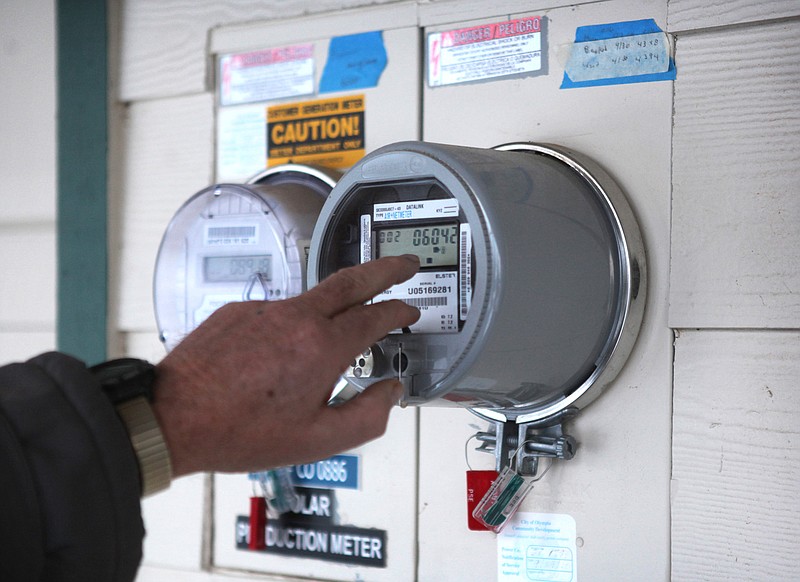Despite TVA's lower electricity rates - or perhaps in part because of the cheaper power - homes in the Tennessee Valley rank among the worst in the country for energy efficiency in the home, according to a new study by the personal website WalletHub.
Alabama, Tennessee and Georgia are among the five worst states in the country for residential energy efficiency and all of the seven states in the Tennessee Valley rank among the bottom third of U.S. states in the efficiency of residents' homes.
"The Southeast is delivering about a third as much emergy efficiency as the national average and states in the Northeast are often doing 10 times more than what we see in the South," said Forest Bradley-Wright, energy efficiency director for the Southern Alliance for Clean Energy. "But even in the Southeast, TVA stands out at the bottom of performance in helping customers make energy efficiency improvements."
TVA offers assistance for some low-income residential customers where local power companies like EPB in Chattanooga provide matching funds to pay for programs like Home Uplift that has made energy upgrades in nearly 500 homes in the Chattanooga area. But other energy assistance programs like low-interest loans or grants to buy more energy-efficient heaters and appliances or cycle-and-save incentives to limit peak power use have largely been phased out by the Tennessee Valley Authority.
Bradley-Wright said TVA was comparable with other Southern utilities in its energy efficiency efforts until about eight years ago. But he said the Tennessee Valley has since fallen behind its neighbors where state governments and regulated utilities offer more tax credits, rebates, and loans to encourage energy efficiency upgrades among residential electricity users.
Among the 50 states, Tennessee ranks No. 46 in home energy efficiency and No. 34 in total residential energy consumption, even though Tennessee's climate is milder than many states. Alabama is the third worst state for home energy efficiency and Georgia ranks as the sixth worst state for energy efficiency in the home, WalletHub said.
George A. Gonzalez, a professor of political science at the University of Miami, said states with more poor people often have more trouble paying for energy efficiency upgrades that pay off over time.
'A problem that customers face is that more energy-efficient appliances have high upfront costs – particularly when compared to less energy-efficient alternatives," Gonzalez said. "Put differently, the savings advantages of more energy-efficient options are only realized over time. Government policies can ameliorate this dilemma by allowing customers to realize those savings upfront – through tax policies (including tax credits)."
According to the U.S. Department of Energy, the average U.S. family spends at least $2,000 a year on utilities with heating and cooling alone accounting for more than half of the bill. TVA residential rates average in the bottom 25% of all U.S. utilities and its industrial rates are among the cheapest 10% of U.S. utilities. That has helped households spend less on energy than in some parts of the country and also helped to attract more jobs to the Tennessee Valley.
But it has also created less demand for energy efficiency even though efficiency measures typically are able to cut electric bills by about 25% or more, Bradley-Wright said.
While energy efficiency measures cut utility sales, they also help electricity producers from having to add new and usually more expensive power plants to generate electricity to meet peak power demands.
"Energy utilities can subsidize energy efficiency improvements because it saves money for the utilities," said Valerie Thomas, a professor of natural systems at Georgia Institute of Technology. "By reducing demand, utilities do not have to buy the most expensive energy and they can save money and provide better service even in very hot or very cold weather. And for low-income households that qualify for government energy assistance programs, energy efficiency upgrades can both help the consumer and reduce costs for the government programs."
TVA expanded its support for the Home Uplift program in the current fiscal year and continued to fund its Community Cares assistance begun last year during the Pandemic. Former TVA President Bill Johnson, who reduced many of the previous energy efficiency programs TVA once offered to help save money, said the utility moved to focus such aid toward lower-income households and TVA now offers assistance - although not direct aid - to others to make energy efficiency improvements.
The TVA act directs the utility to deliver power at the lowest feasible cost and the energy efficiency programs were cut as part of more than $800 million of annual operating expenses TVA trimmed from what it spent a decade ago.
But Bradley-Wright said spending money to promote energy efficiency will help reduce overall energy bills for consumers and pay off for customers and utilities in the long run.
"Energy rates are lower in the Tennessee Valley, but home energy bills are still relatively high in the Valley and that speaks for the need for and the benefit of efficiency programs," he said.
Contact Dave Flessner at dflessner@timesfreepress.com or at 423-757-6340.
Which states have the least energy-efficient homes?
These states have the least energy-efficient homes:
1. South Carolina
2. Alabama
3. Tennessee
4. Louisiana
5. Georgia
6. West Virginia
7. Arkansas
8. Kentucky
9. North Carolina
10. Mississippi
Source: WalletHub analysis of energy efficiency in the home in each of the 50 states.
